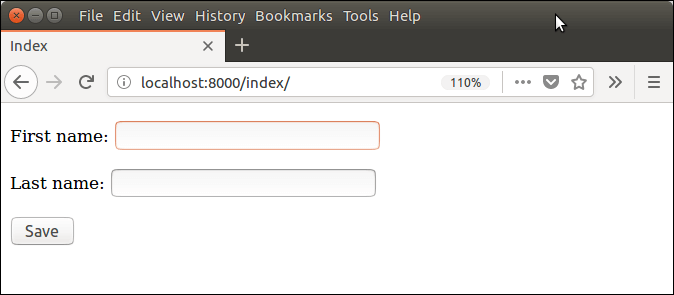It is a class which is used to create an HTML form by using the Model. It is an efficient way to create a form without writing HTML code.
Django automatically does it for us to reduce the application development time. For example, suppose we have a model containing various fields, we don’t need to repeat the fields in the form file.
For this reason, Django provides a helper class which allows us to create a Form class from a Django model.
Let’s see an example.
Django ModelForm Example
First, create a model that contains fields name and other metadata. It can be used to create a table in database and dynamic HTML form.
// model.py
from __future__ import unicode_literals
from django.db import models
class Student(models.Model):
first_name = models.CharField(max_length=20)
last_name = models.CharField(max_length=30)
class Meta:
db_table = "student" This file contains a class that inherits ModelForm and mention the model name for which HTML form is created.
// form.py
from django import forms
from myapp.models import Student
class EmpForm(forms.ModelForm):
class Meta:
model = Student
fields = "__all__" Write a view function to load the ModelForm from forms.py.
//views.py
from django.shortcuts import render
from myapp.form import StuForm
def index(request):
stu = EmpForm()
return render(request,"index.html",{'form':stu}) //urls.py
from django.contrib import admin
from django.urls import path
from myapp import views
urlpatterns = [
path('admin/', admin.site.urls),
path('index/', views.index),
] And finally, create a index.html file that contains the following code.
<!DOCTYPE html>
<html lang="en">
<head>
<meta charset="UTF-8">
<title>Index</title>
</head>
<body>
<form method="POST" class="post-form">
{% csrf_token %}
{{ form.as_p }}
<button type="submit" class="save btn btn-default">Save</button>
</form>
</body>
</html> Run Server
Run the server by using python manage.py runserver command.
After that access the template by localhost:8000/index URL, and it will produce the following output to the browser.
Output:

Well, an HTML form is created automatically. This is a feature of Django.
Leave a Reply